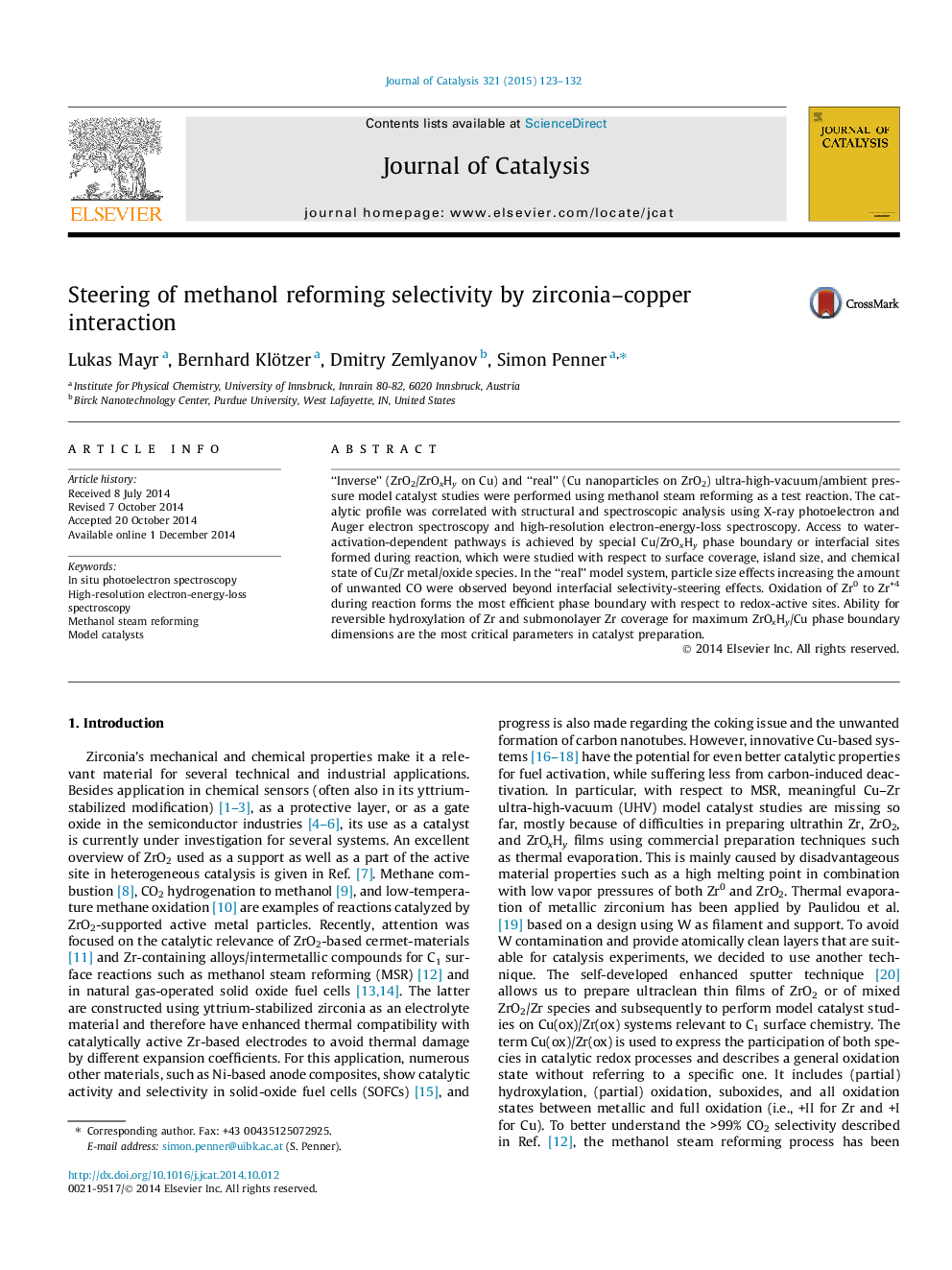| Article ID | Journal | Published Year | Pages | File Type |
|---|---|---|---|---|
| 60932 | Journal of Catalysis | 2015 | 10 Pages |
•Water activation-dependent pathways for methanol steam reforming on ZrOxHy/Cu phase boundary sites.•Access to full dehydrogenation/total oxidation on Cu/ZrO2 systems by special phase boundary sites.•CO2 selectivity in methanol steam reforming can be steered by avoiding this type of phase boundary.•Oxidation of Zr during reaction forms the most active phase boundary regarding redox-active sites.•Reversible hydroxylation of Zr and a submonolayer Zr coverage are the most critical parameters.
“Inverse” (ZrO2/ZrOxHy on Cu) and “real” (Cu nanoparticles on ZrO2) ultra-high-vacuum/ambient pressure model catalyst studies were performed using methanol steam reforming as a test reaction. The catalytic profile was correlated with structural and spectroscopic analysis using X-ray photoelectron and Auger electron spectroscopy and high-resolution electron-energy-loss spectroscopy. Access to water-activation-dependent pathways is achieved by special Cu/ZrOxHy phase boundary or interfacial sites formed during reaction, which were studied with respect to surface coverage, island size, and chemical state of Cu/Zr metal/oxide species. In the “real” model system, particle size effects increasing the amount of unwanted CO were observed beyond interfacial selectivity-steering effects. Oxidation of Zr0 to Zr+4 during reaction forms the most efficient phase boundary with respect to redox-active sites. Ability for reversible hydroxylation of Zr and submonolayer Zr coverage for maximum ZrOxHy/Cu phase boundary dimensions are the most critical parameters in catalyst preparation.
Graphical abstractFigure optionsDownload full-size imageDownload high-quality image (140 K)Download as PowerPoint slide
